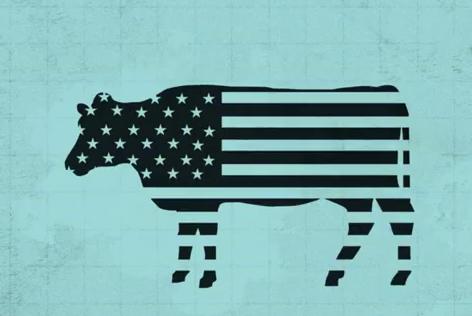 You know how hot weather makes more people believe in climate change? Well, let’s hope that this year’s smaller-than-average Gulf Dead Zone — due to climate-related drought, no less – doesn’t keep people from seeing the urgency of agricultural runoff.
You know how hot weather makes more people believe in climate change? Well, let’s hope that this year’s smaller-than-average Gulf Dead Zone — due to climate-related drought, no less – doesn’t keep people from seeing the urgency of agricultural runoff.
First, the good news: As we mentioned quickly in our latest drought roundup, the only bright side to the fact that there has been much less rainfall in the Midwest this year is the added fact that less of it is flowing into the Mississippi River and out into the Gulf. According to a Louisiana Universities Marine Consortium (LUMC) press release, “nutrient output into the Gulf this spring approached near the 80-year record low.”
This is a) crazy scary in its own right, and b) it means fewer nutrients in the water, fewer algae blooms, and a much smaller lifeless, oxygen-deprived area. (It’s less than half the size of last year’s dead zone.) So fish and other aquatic life have much more room to breathe, so to say. And that’s good(ish) news. Except that the source of the problem hasn’t gone anywhere.
An in-depth article that ran in Scientific American last month reminds us that the trend in the dead zone’s overall size is still going up. And industrial farms are still an enormous contributor to the problem. As the SciAm piece mentions:
Farmers use many methods to reduce runoff: planting cover crops, adjusting the amount of fertilizer and when it’s applied. Such conservation practices in the Upper Mississippi River basin reduce nitrogen loss by an average of 18 percent per acre, according to a USDA report.
But the same report found that only 14 percent of cropland consistently had good nitrogen management.
“What we are showing is how bad the problem would be if there were no conservation,” said Lee Norfleet, a USDA soil scientist. “If there is an uptick, it would be a lot worse if a lot of (conservation) practices had not occurred.
While some commodity farmers may have become more careful with synthetic nitrogen fertilizer — using smaller quantities more often for better absorption, for instance — they have also been planting more corn. So the overall quantity in use has remained roughly the same for the last several decades.
There’s also evidence that once nitrates from fertilizer leak into aquifers, they can remain in groundwater for years if not decades (this effect was recently documented in California’s Tulare Lake Basin, where it was found that “most nitrate in drinking water wells today was applied to the surface decades ago”). That groundwater can also often drain into the rivers, where the nitrates — a form of nitrogen that algae and other organisms can take in directly — wreak their havoc.
As the scientists from LUMC put it: “Although the size of the hypoxic area was small … this is not because sufficient actions have been taken within the watershed’s landscape to reduce nutrient pollution.”
And it’s possible that a wet 2013 could just add this year’s residual nutrients to next year’s, resulting in a flood of nitrogen and phosphorous that would send even more “fish, shrimp and crabs fleeing the low oxygen waters and animals that remain in the sediments dying off.”




